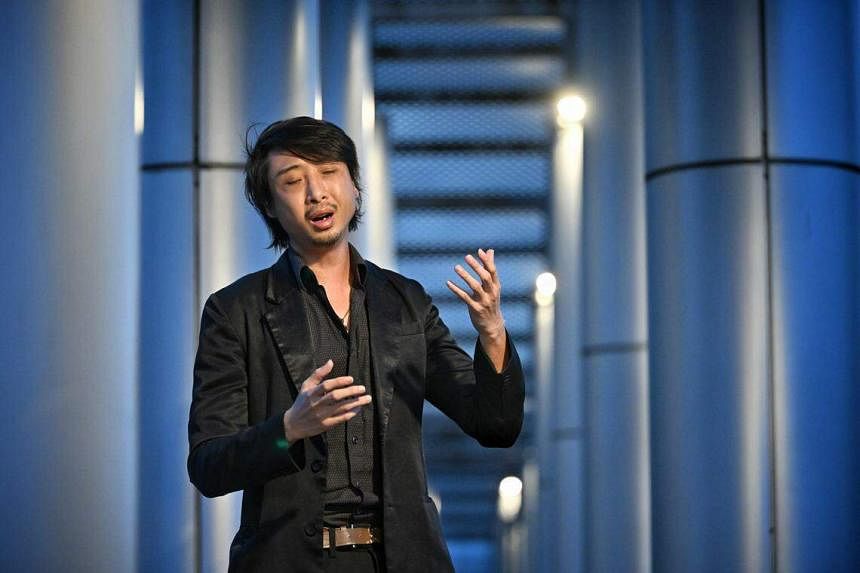SINGAPORE – Several heavyweight arts groups here have engaged the services of practitioners trained in performing arts medicine (PAM) in recent years, indicating growing demand.
These include the Singapore Symphony Orchestra (SSO), the Yong Siew Toh Conservatory of Music and the SAF Central Band, the premier band of the Singapore Armed Forces, which often performs at the Istana for presidential events and welcome ceremonies for foreign dignitaries.
In December 2021, Changi General Hospital (CGH) also launched a Performing Arts Medicine Clinic at the Singapore Sport and Exercise Medicine Centre at Novena Medical Center. Similar services are offered at CGH.
SAF Central Band’s director of music Ignatius Wang Kebin says: “Since 2020, the SAF Central Band has been inviting PAM specialists to conduct workshops for our professional military musicians. These include workshops in addressing performance anxiety, stress management techniques and resilience-building strategies.”
Foam rollers, which aid in muscle recovery and relaxation, are issued to the musicians in the 62-member band and PAM-related exercises are used in their training programme to reinforce strength and recovery.
He adds: “These concerted efforts underscore our commitment to ensure the well-being and performance capabilities of our military musicians.”
Private medical practice Osler Health International has a partnership with the Singapore Symphony Group – which manages the SSO, as well as the Singapore Symphony Choruses and the Singapore National Youth Orchestra – where Dr June Tan Sheren has been the primary care physician for the musicians and administrative staff since 2021.

Dr Sheren, an Osler family physician who is trained in PAM, has also run a pro bono monthly clinic, called The Musicians’ Clinic, for students at the Yong Siew Toh Conservatory of Music, a school of the National University of Singapore, since early 2023.
Dr Sheren, whose experience learning the cello as an adult prompted her interest in PAM, says there are unique factors in the underserved needs of the community.
For instance, some performers may have stage fright, feel the pressing need for the show to go on in spite of chronic strain, or experience postural issues and muscle aches that arise from handling “asymmetrical” instruments, such as the violin.
She adds: “You can’t tell a musician who is going to perform to rest or stop playing for three days.”
Aerialist Shirley Wong, 41, and opera singer Jireh Koh, 32, say their work has physical and mental challenges that are not widely understood.
Ms Wong performs acrobatics while suspended 14m or higher in the air, using silks and other apparatus. If she is recovering from an injury or experiencing chronic pain, she prefers engaging the services of a physiotherapist who specialises in PAM, rather than a professional who is not trained in this area.
Ms Wong, who also teaches aerial arts at Starz Aerial Dance School in Tanjong Pagar, says some physiotherapists she has encountered were more used to helping their clients regain functional fitness, which involves training the body for activities in daily life. In contrast, her work may involve holding her body upside down in the air in a certain position.
“This kind of movement does not exist in daily activity. This is not about functionality any more. It’s about challenging my body to be at its maximum ability. I need to reach my optimal level as fast as I can,” she says.
She may modify certain movements to ease bodily stress, such as by bending one leg slightly rather than fully extending it.
Ms Wong adds: “It’s not only my livelihood – it would be devastating if I could not do aerial anymore.”
Her PAM-trained physiotherapist, Ms Pooja Verma, says clients like Ms Wong perform at “elite levels”, like athletes.
The senior physiotherapist at Physio Asia Therapy Centre adds: “The main difference would be understanding the demands of performance and what the artiste needs.”
She asks her patients what the choreography is like, for example, and tries to figure out how to keep them on stage “as much as possible, without detriment”.
The changes a performer needs to protect his or her well-being can be subtle, says Ms Verma. For instance, she may suggest block heels instead of stilettos for a performer with weakened ankles who has to navigate a raked stage, which is a theatre stage that slopes upwards, away from the audience.
Mr Jireh Koh, an opera singer, visual artist and arts educator, lost the highest register of his four-octave singing voice between 2017 and 2021, an experience that he calls a “nightmare”.
He was diagnosed with muscle tension dysphonia, a change in the sound or feel of the voice due to excessive muscle tension in and around the voice box.
While he can sing bass roles, as well as low-pitched Tibetan throat singing, he lost “a lot of joy and meaning” which he derived from singing in the high range.
“It’s a different kind of bliss. My feminine side expressed myself in the soprano range, while my masculine side in the bass range,” he says, adding he was relieved when he regained a part of his identity.
After undergoing voice therapy – which involved lip trills and other exercises that reduce vocal strain and expand vocal range – and taking singing lessons, he recovered enough to take on a soprano aria and a mezzo-soprano solo in concerts by the Singapore Lyric Opera in 2022.

Dr Sheren from Osler Health International says PAM-trained practitioners like herself “join the dots” by looking at the “intertwined” physical and mental challenges faced by performers, such as musicians and actors who have to access their emotions to interpret a piece or role.
She adds: “Another encouraging marker (in PAM awareness) is that students and young performers are getting the tools for self-care, which is remarkable because injuries and illness have been perceived as a point of stigma for high-level performers, particularly if they’re in a very competitive field and vying for top positions.”
Mr Huang Ming Xiang is a 28-year-old student at Yong Siew Toh Conservatory of Music who majors in Music, Collaboration and Production, and plays the pipa.
He consulted Dr Sheren a few months ago in preparation for his one-man show, Pipa Dreams, which was staged at the conservatory in March.
On her advice, he focused on doing more shoulder exercises to build his upper-body strength and supplement his core muscles. He also found that warming up and stretching, as she suggested, reduced the pain he felt after practising for hours.
“Performing arts medicine is helpful for young performing adults, students or parents of children who may get injuries before their musical career even starts,” says Mr Huang, who had “bad practising form” for years after he started playing the pipa at 14.
“Each discipline has its own physical and mental rigour that needs careful management and attention to ensure our bodies stay healthy and safe. It’s like a sport,” he adds.
“Without her advice, I probably wouldn’t have been able to cope with the physical and mental strain that comes with putting up a one-man theatrical music show for the first time.”
“I had to learn that we need to take care of ourselves so that we can give our best to others.”


